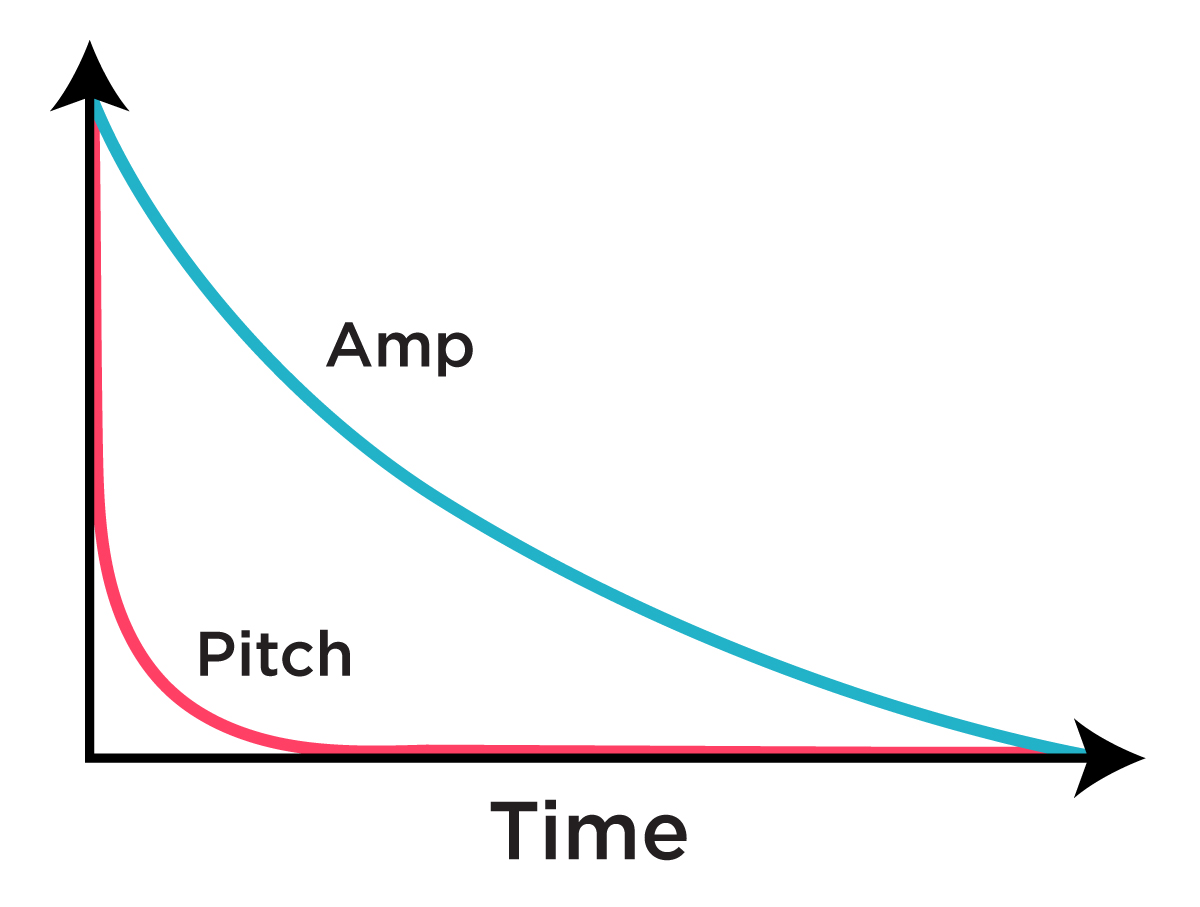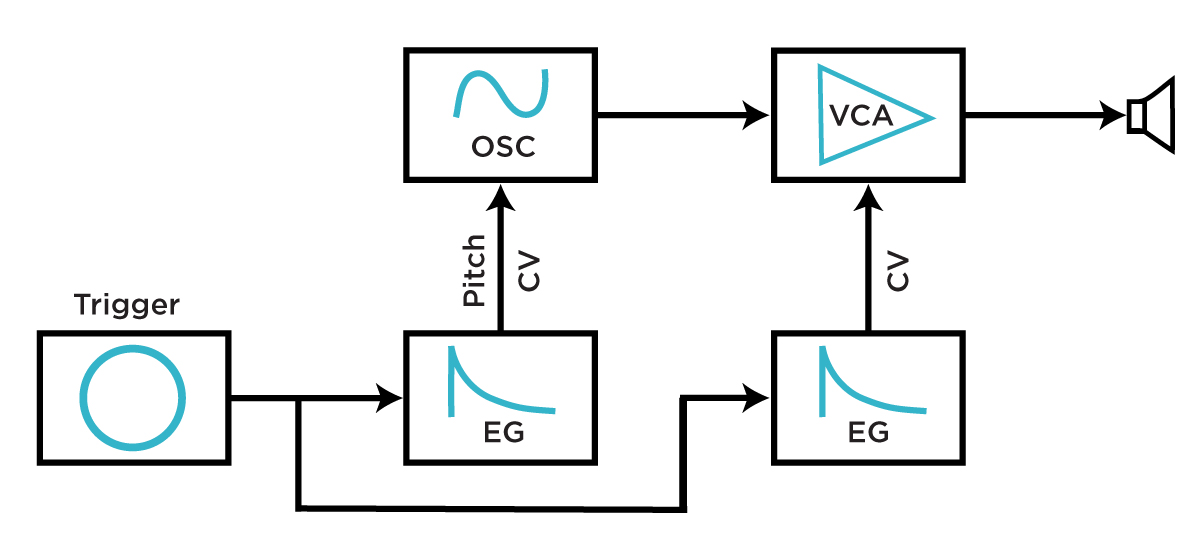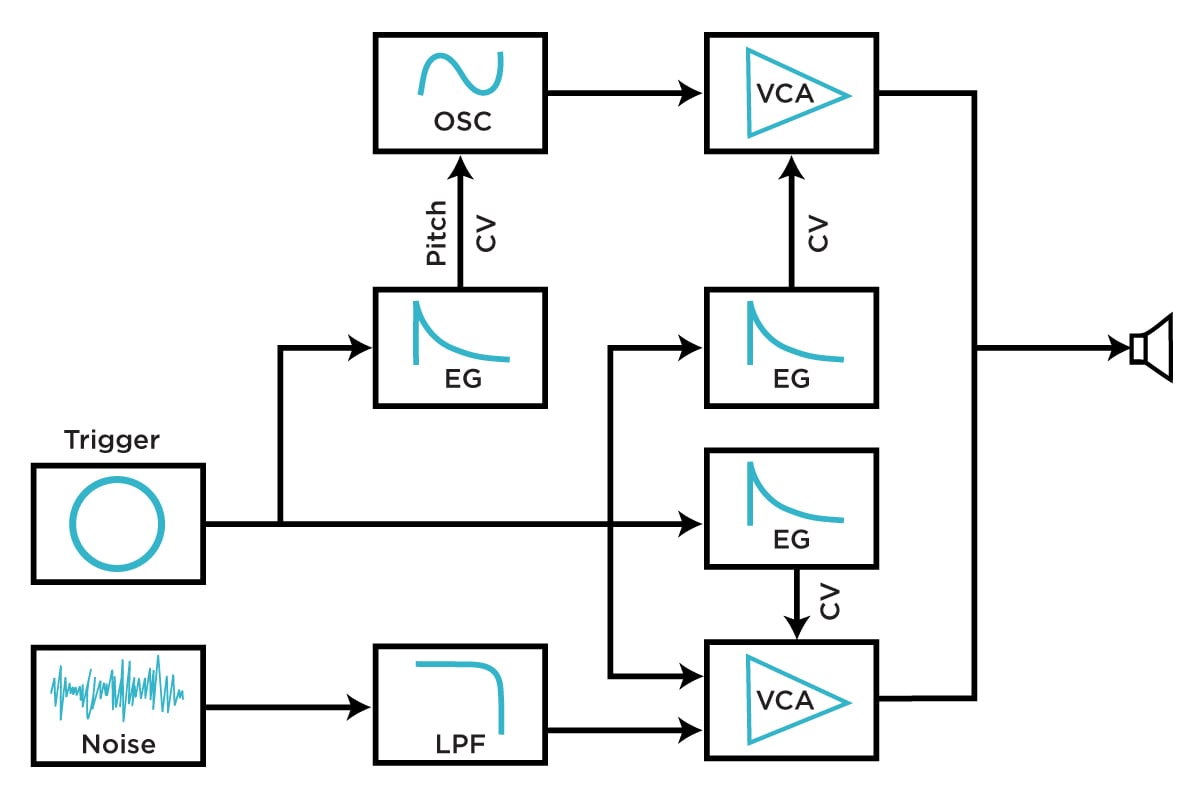The kick drum is the backbone of most rhythm based tracks, so lets take a minute to understand how they are put together, and how to make one that is customized to cut through the mix and make subwoofers rattle across the floor.
 The pitch and amplitude envelopes of a kick drum
The pitch and amplitude envelopes of a kick drum
808 Kick Drums
The 808 kick is smooth, bassy and sometimes has a long decay. The 808 design is one of the simplest ways to make an electronic kick, it is a filter that is close to self oscillating. Triggers are fed directly into the filter exciting it and pushing it over the edge into self oscillation. The pitch goes up slightly at the start and then goes to a lower frequency with a natural exponential envelope, and the self oscillating of the filter slowly fades, giving you a natural amplitude decay as well.
This design produces the meat of the kick, an oscillator which quickly goes from a high pitch to a low pitch and then sustains that low pitch until the amplitude fades out.
A More Controllable Kick
The next step in kick drum design is replacing the almost oscillating filter in the 808 design with a sine wave oscillator. Since the oscillator will not produce the pitch bend or amplitude envelopes we need we will have to add two decay envelopes and a VCA.

Every time a trigger comes in for the drum both envelopes start their decays (use exponential envelopes if you want punchy sounding kicks). One envelope modulates the pitch of the oscillator, causing it to jump from its bass frequency to a higher pitch and then quickly come back to its original low frequency. Attenuating the envelope allows you to control how high the maximum frequency of the pitch goes, higher bend amounts can produce zappy lazer beam kicks, and lower bend amounts will make mellow and droning kicks.
The second envelope controls the amplitude of the VCA. This envelope can be longer and less exponential than the pitch envelope, letting through a tail of low frequencies.
The 909 Kick Drum Adds Click Transients
The 909 kick is capable of producing more aggressive and complex sounds than the previous designs mentioned, and needs a more complex architecture to achieve it. The main part of the sound is an envelope modulated VCO through a VCA, identical to the previous example.

The 909 adds a click and short filtered noise burst to the start of the sound to sharpen up the attack transient. We can add this to our kick drum by combining two signals into a second VCA with a shorter decay envelope than the one for the oscillator. One of the new signals is white noise run through a lowpass filter and the other is just a short pulse that could even be the trigger signal itself.
Kick Treatment
Once you have a solid synthesized kick sound try beefing it up with some compression or distortion. If you need more low end you can use a filter or EQ to boost the frequencies you want to emphasize.







